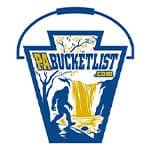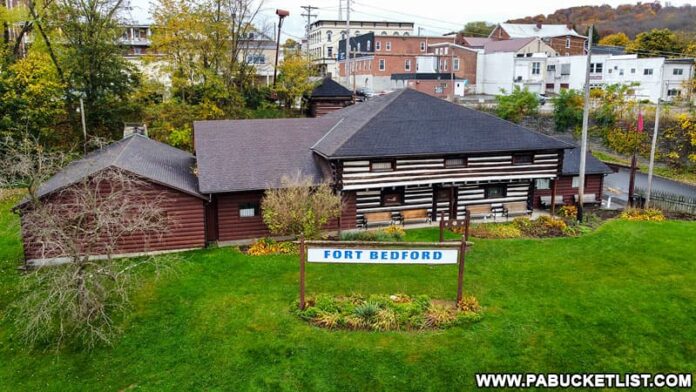
The Fort Bedford Museum was built in 1958, 200 years after the original Fort Bedford was constructed during the French and Indian War.
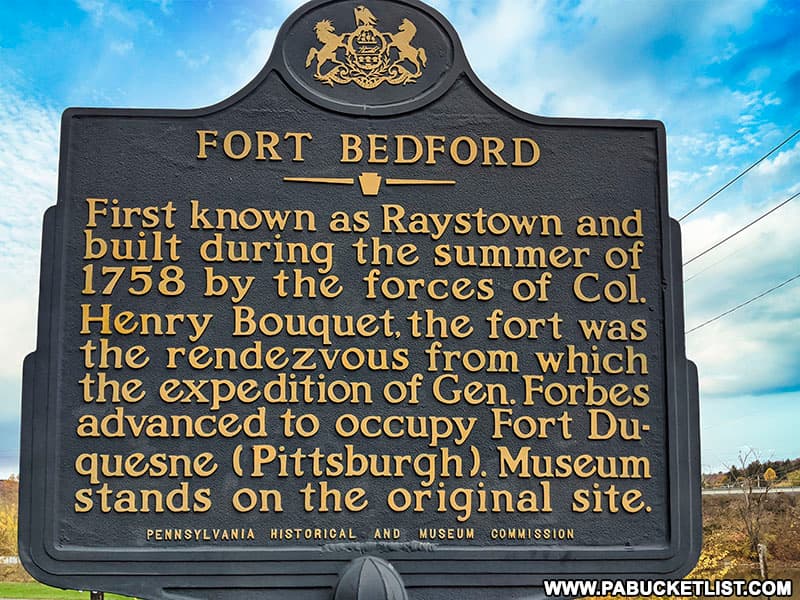
The museum tells the story not only of that specific war and time period, but of the people that inhabited the region before and since, as well as their history and customs.
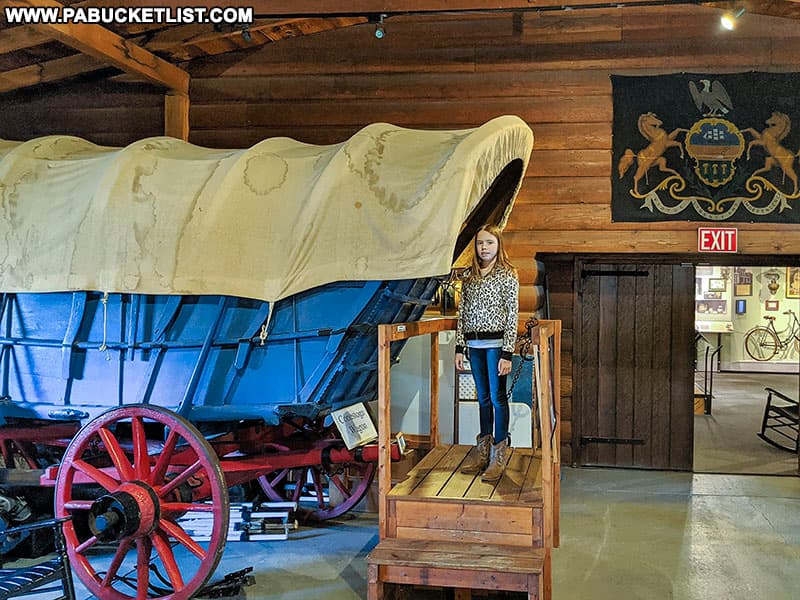
Located just off the Lincoln Highway in downtown Bedford, the Fort Bedford Museum is an outstanding place to learn about the history of this part of Pennsylvania, once considered the “Wild West” of colonial America.
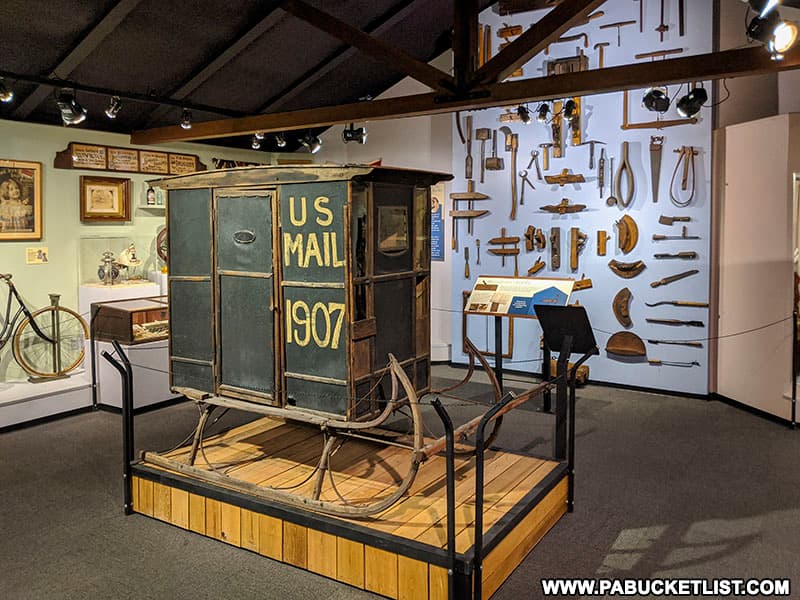
Brief History of Fort Bedford
Fort Bedford was constructed during the French and Indian War by British troops under the command of Colonel Henry Bouquet, who in turn answered to General John Forbes.
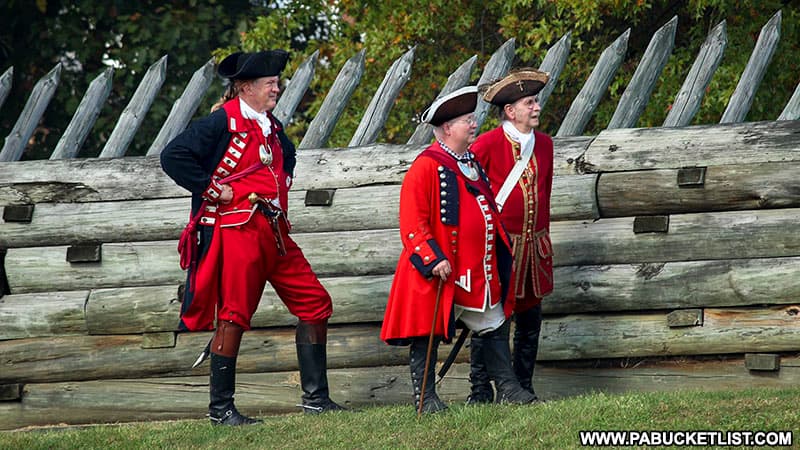
The French and Indian War in America was a fight to determine who would control the “Ohio Country” (part of which is modern day western Pennsylvania), the French and their Native American allies, or the British and their Native American allies.
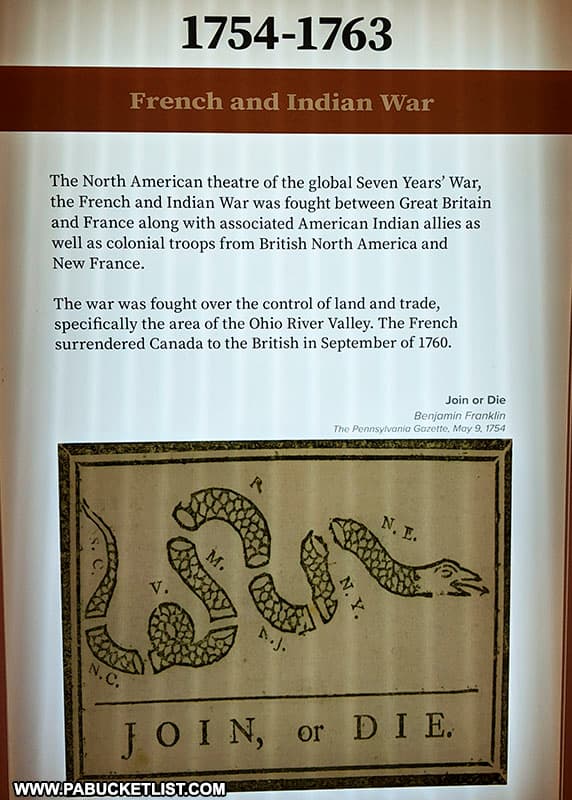
Three years earlier in 1755, British General Edward Braddock had been soundly defeated (and mortally wounded) in an attempt to remove the French from Fort Duquesne, site of present-day Pittsburgh.
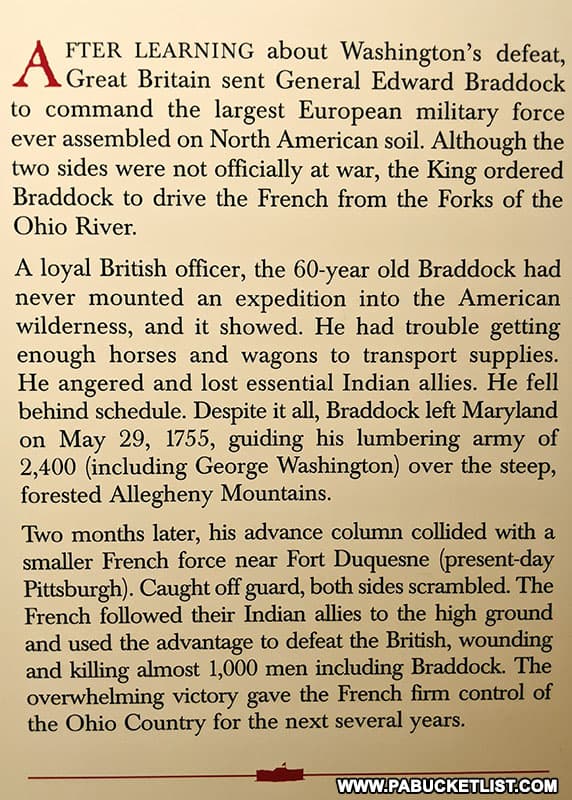
To succeed where Braddock had failed, General Forbes ordered a road be built from Philadelphia westward towards Fort Duquesne, with a series of forts and supply depots built roughly every 50 miles along the route to protect his supply lines.
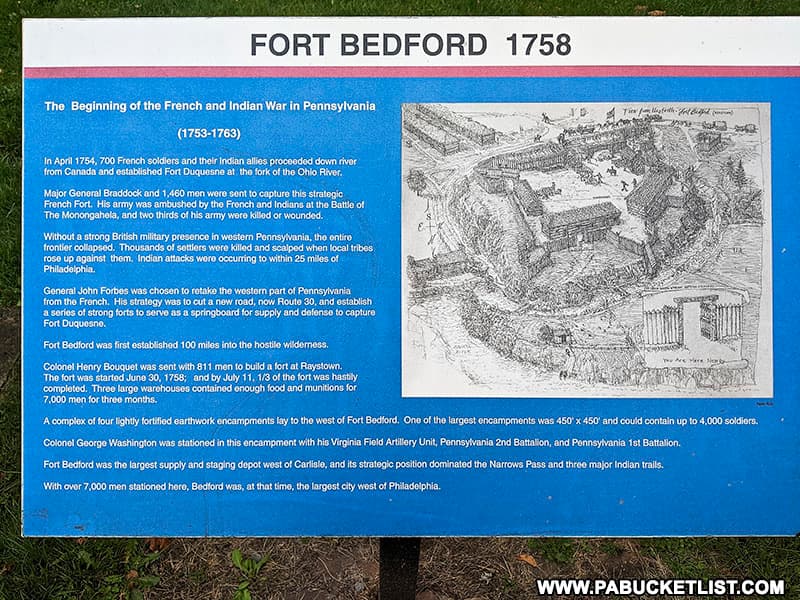
The Fort Bedford Museum is NOT a replica of the original fort, like Fort Ligonier in Westmoreland County, built during the same military campaign.
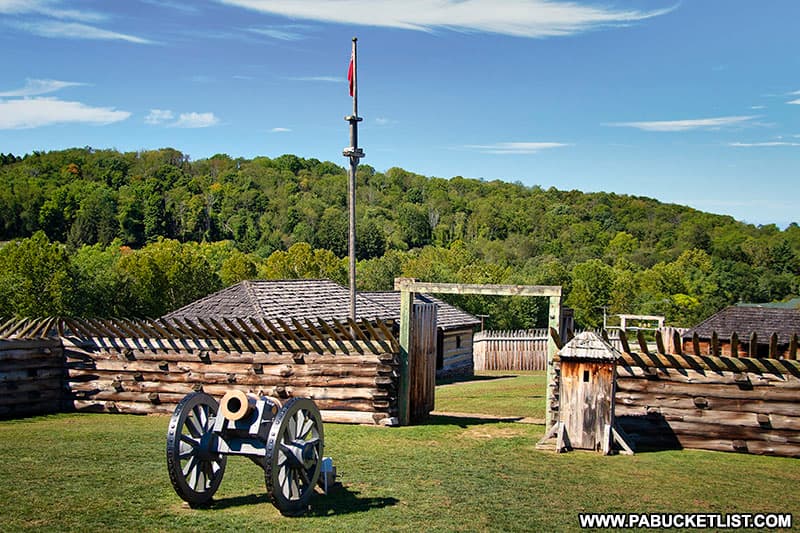
Rather, it is fashioned to look like a “blockhouse” from around the same time period, one of several blockhouses that are believed to have been part of the original Fort Bedford.
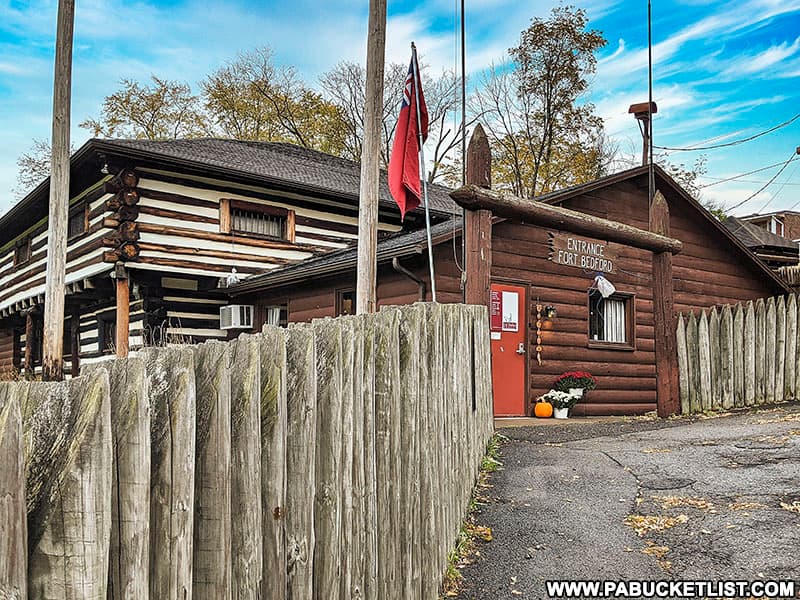
There is, however, a detailed model of what the original Fort Bedford is believed to have looked like on display inside the museum.
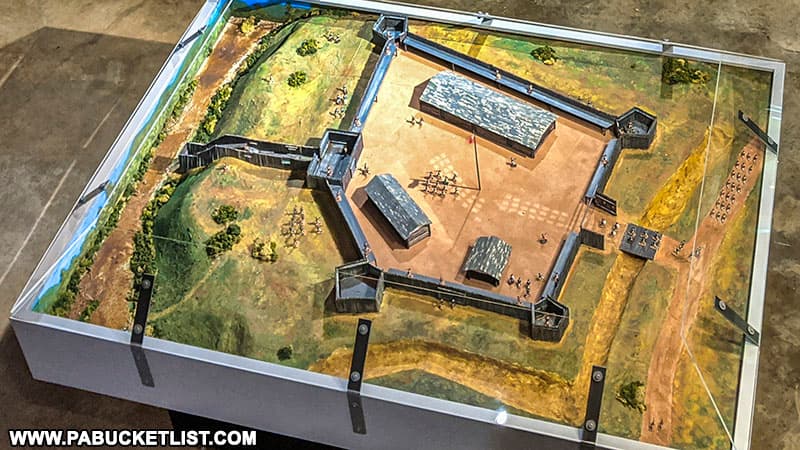
Touring the Fort Bedford Museum
The Fort Bedford Museum contains thousands of artifacts and numerous exhibits that tell the story of the people and events that shaped the history of present-day Bedford County.
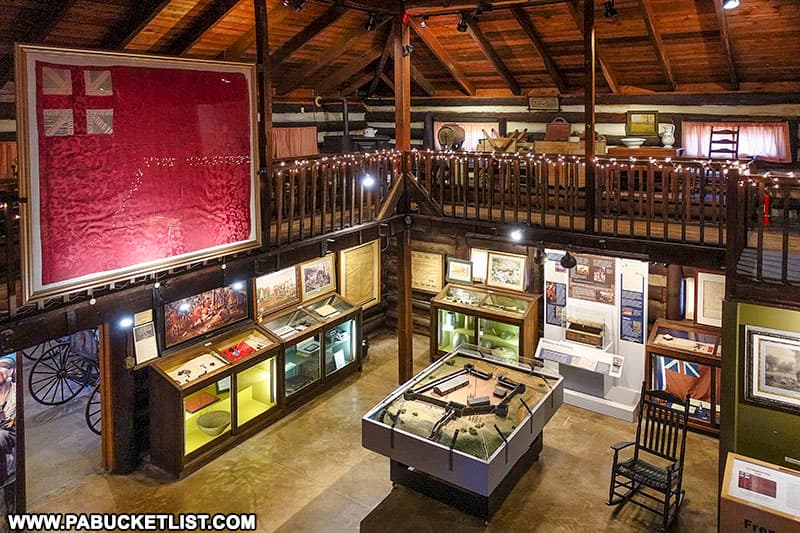
Being named after a fort, of course there are plenty of military artifacts on display, as you would expect.
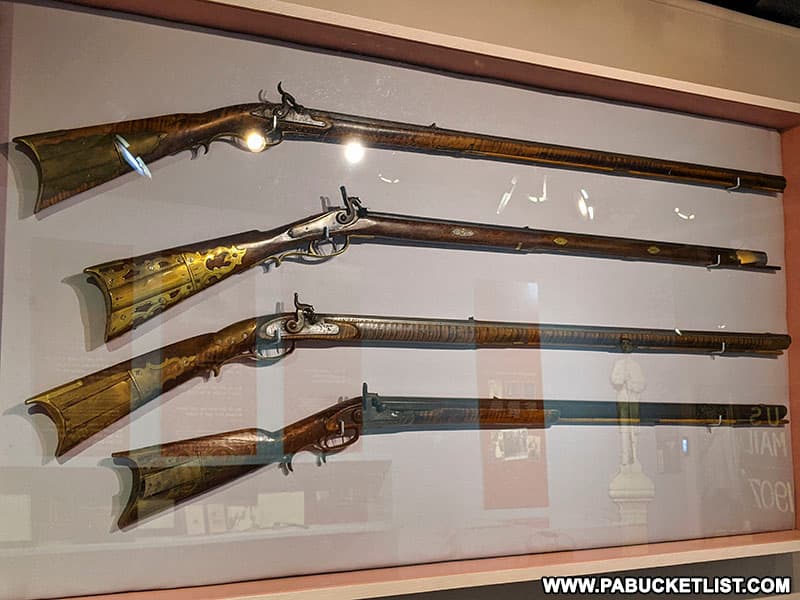
But there is much more to the museum than just “war stories”.
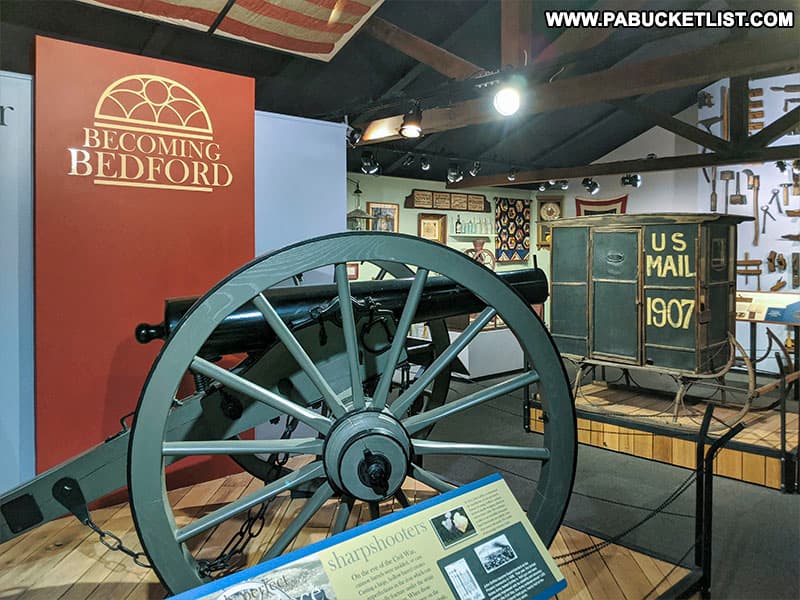
Means of transportation, styles of clothing and furniture, famous citizens, and inventions that were born in Bedford County are chronicled as well.
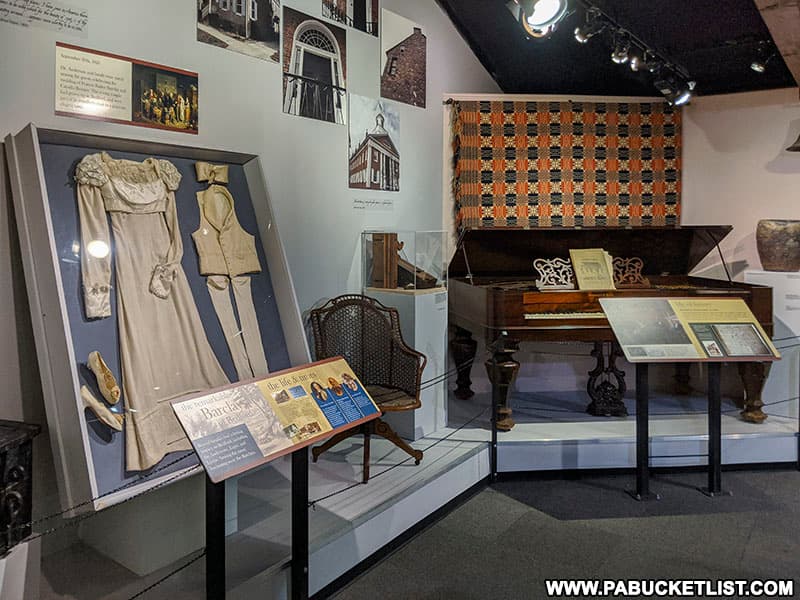
The Original Fort Bedford
Portions of the footprint of the original Fort Bedford are visible at a small park just a few hundred yards east of the Fort Bedford Museum.
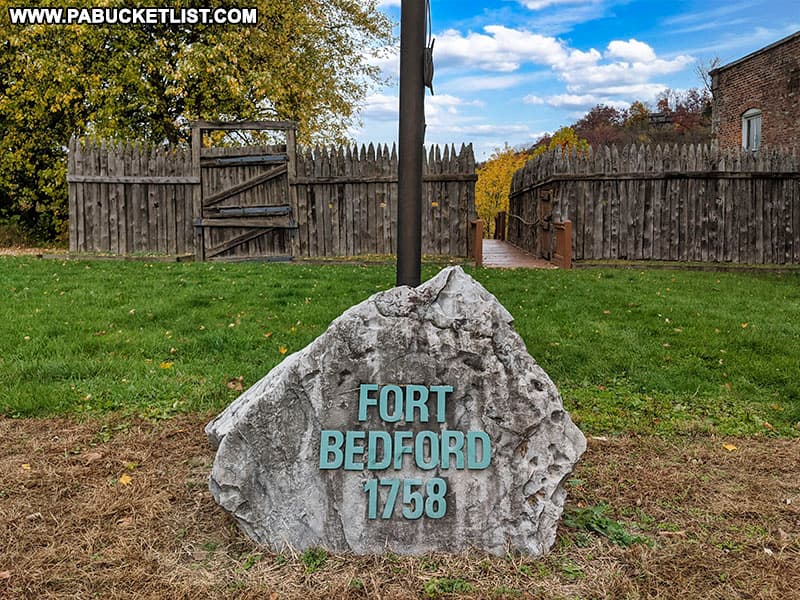
Accessible either from East Pitt Street (the original Lincoln Highway) or via a riverwalk and stairs from below, the original foundation and reproduction of the stockade are worth seeing if you’re a history buff.
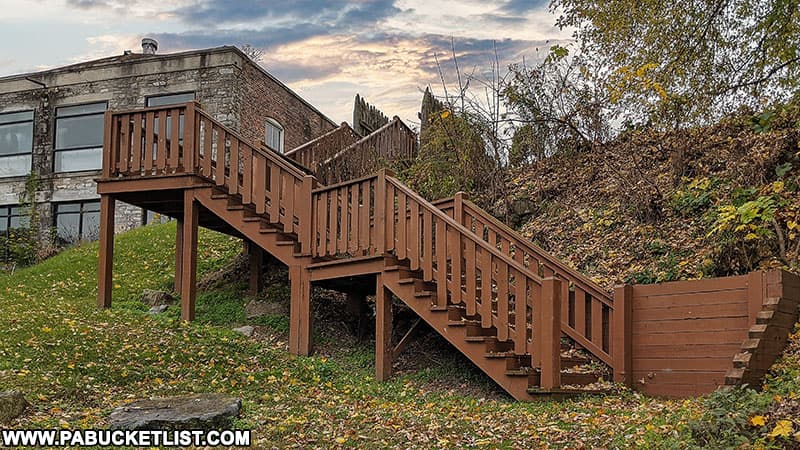
Fort Bedford Museum Hours and Directions
The Fort Bedford Museum is located just off the original Lincoln Highway at 110 Fort Bedford Dr, Bedford, PA 15522.
Or if you prefer GPS coordinates, use 40.01994, -78.50383.

For up-to-date hours, admission prices, and information on potential closures (COVID-related or otherwise), please be sure to check the Fort Bedford Museum’s official website for details.
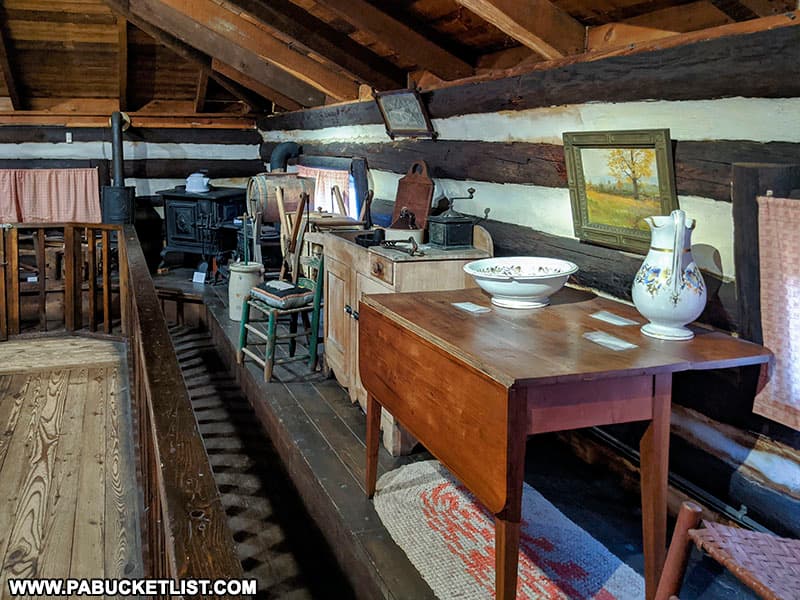
Related Attractions
Fort Necessity in Fayette County is where the first shots of the French and Indian War were fired.
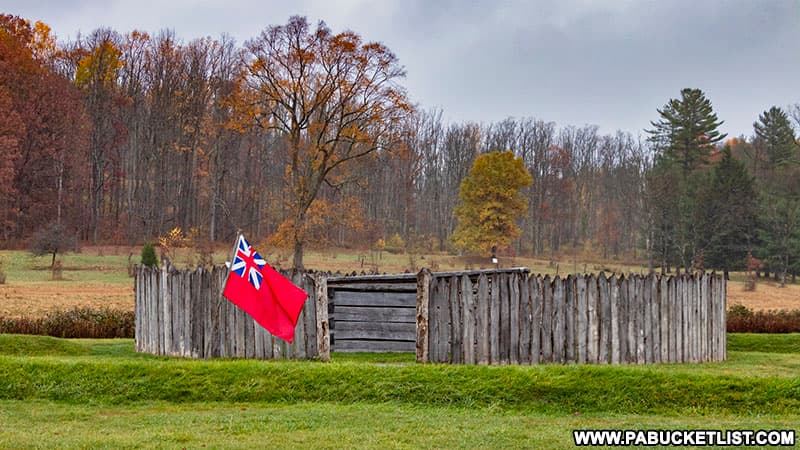
It is also the site of George Washington’s only military surrender, in 1754.
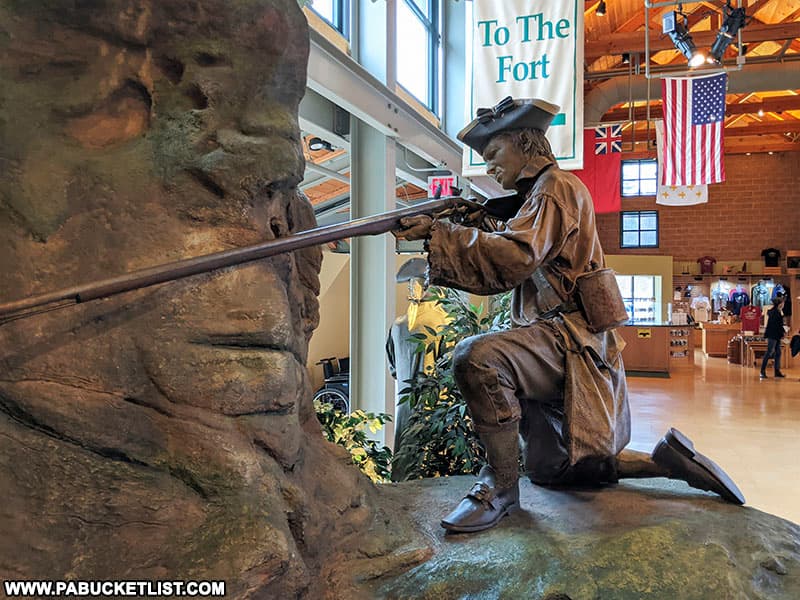
Braddock’s Battlefield History Center preserves and interprets the historical significance of the Battle of the Monongahela, also known as Braddock’s Defeat, which took place on July 9, 1755.
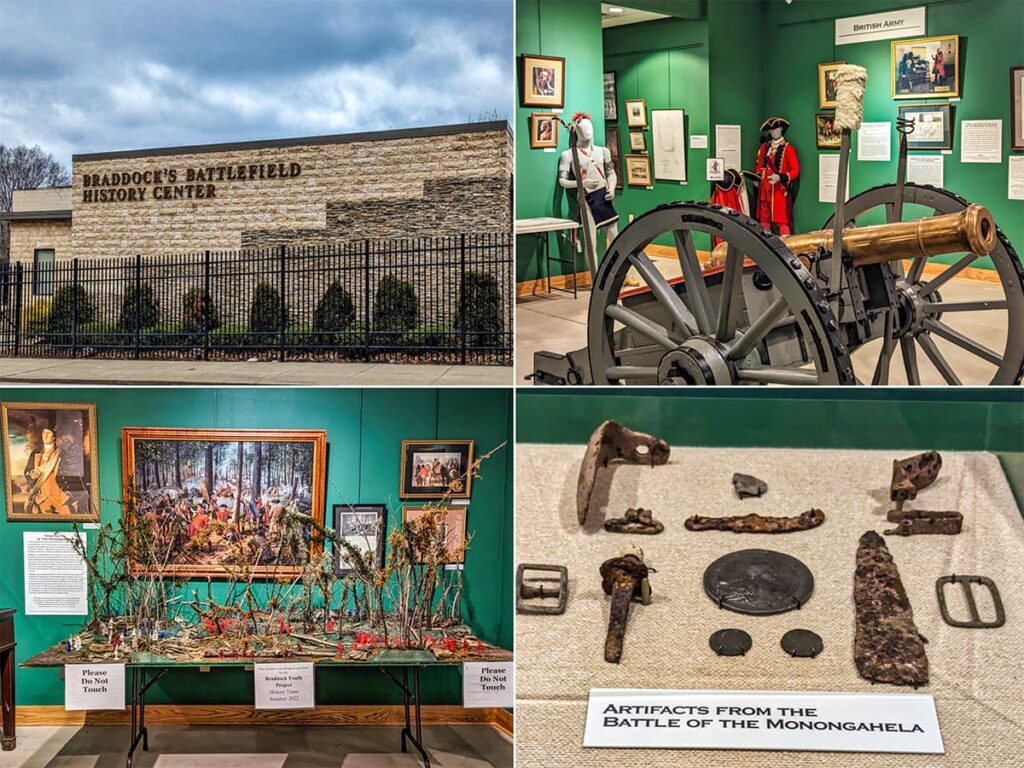
This effort to capture Fort Duquesne from the French ended in a disastrous loss for British troops under the command of General Edward Braddock, who was mortally wounded in defeat.
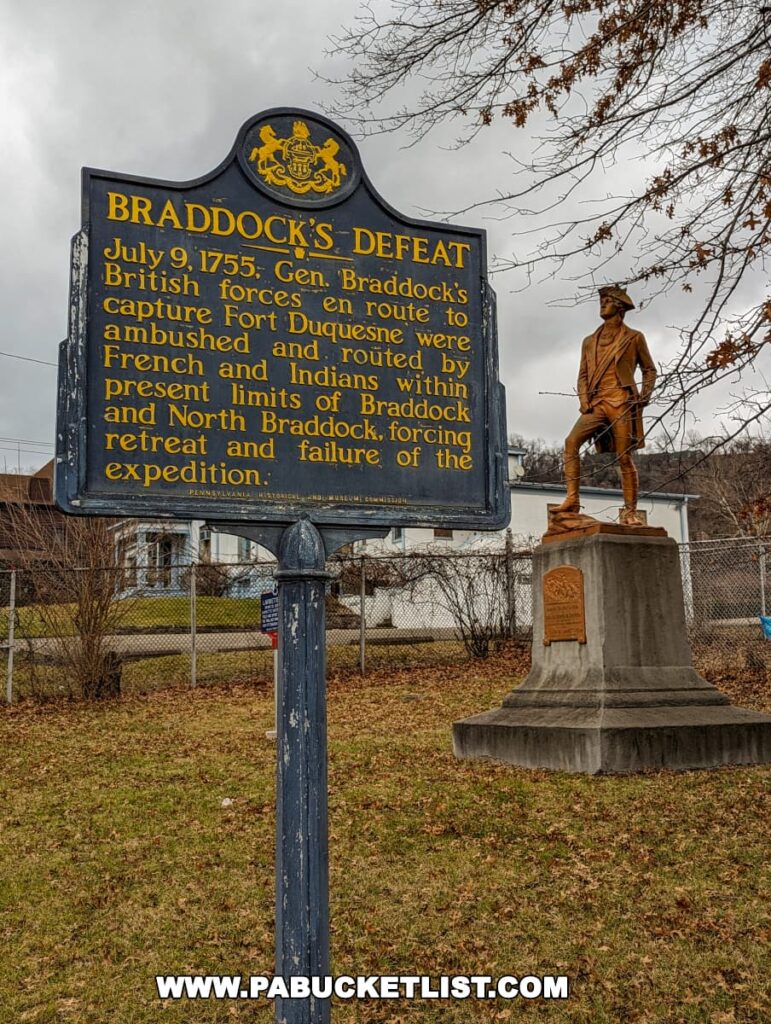
Fort Ligonier in Westmoreland County was built the same year as Fort Bedford, and is the site from which General Forbes launched his successful mission to take Fort Duquesne from the French.
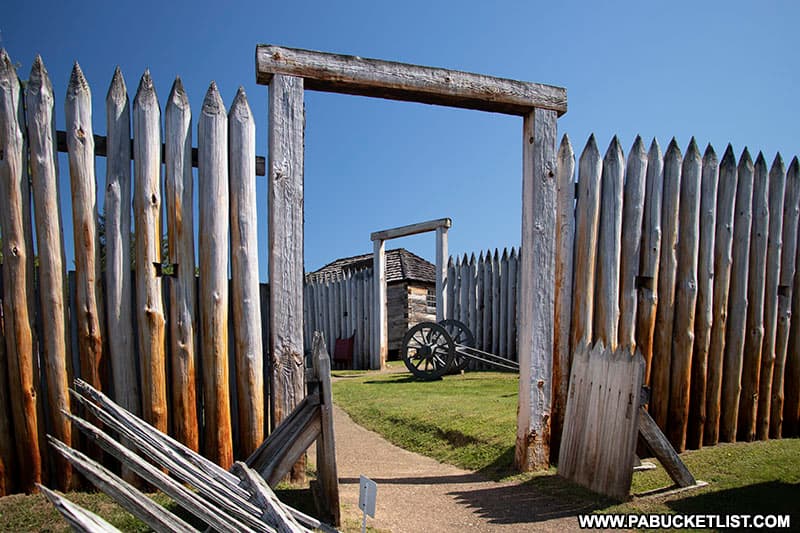
This full-sized replica of the original British fort also boasts an outstanding museum dedicated to the French and Indian War.
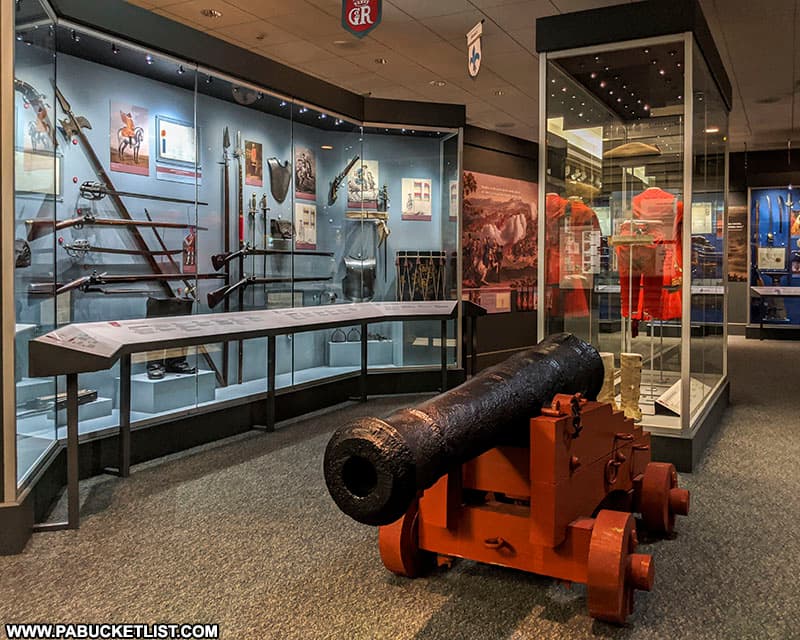
Nearby Attractions
Located just a few blocks from Fort Bedford is Dunkle’s Gulf Station, an art deco-style service station built along the Lincoln Highway in 1933 and still in operation to this day!
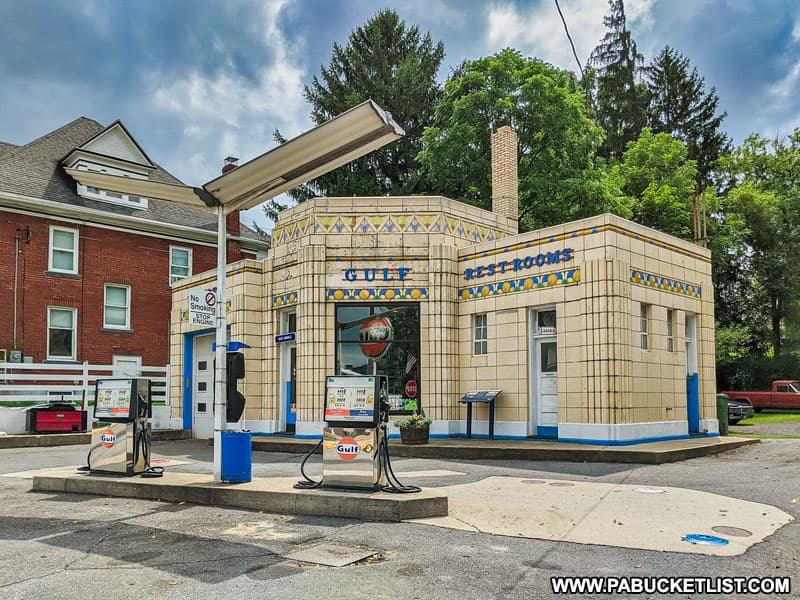
The Bedford Coffee Pot is “roadside giant” from the heyday of the Lincoln Highway, located along the western edge of Bedford.
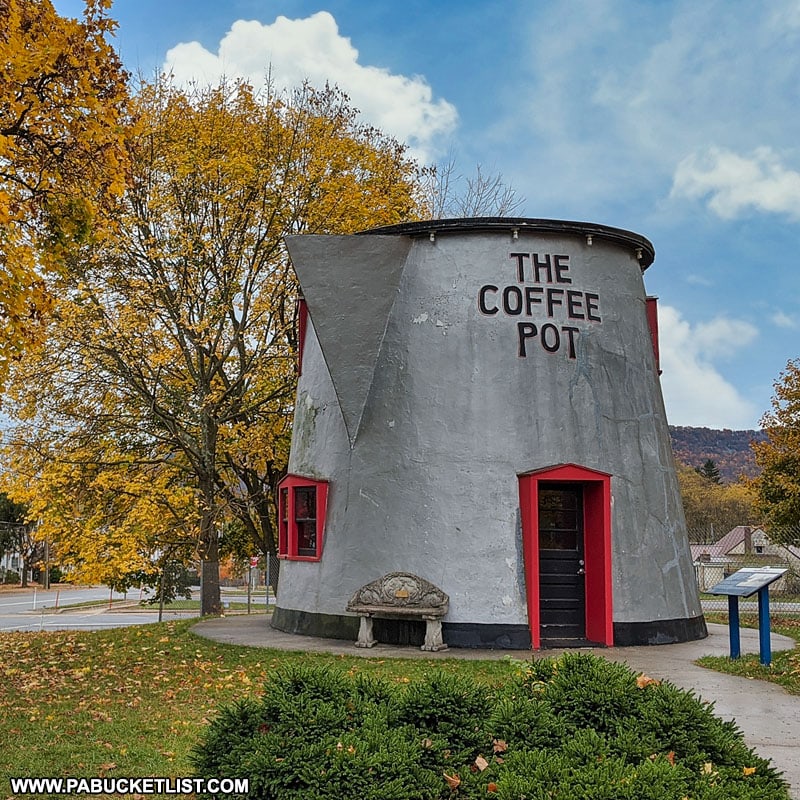
Old Bedford Village in Bedford County is a living history museum that gives you a glimpse into what life was like in western Pennsylvania from 1700 until 1899.
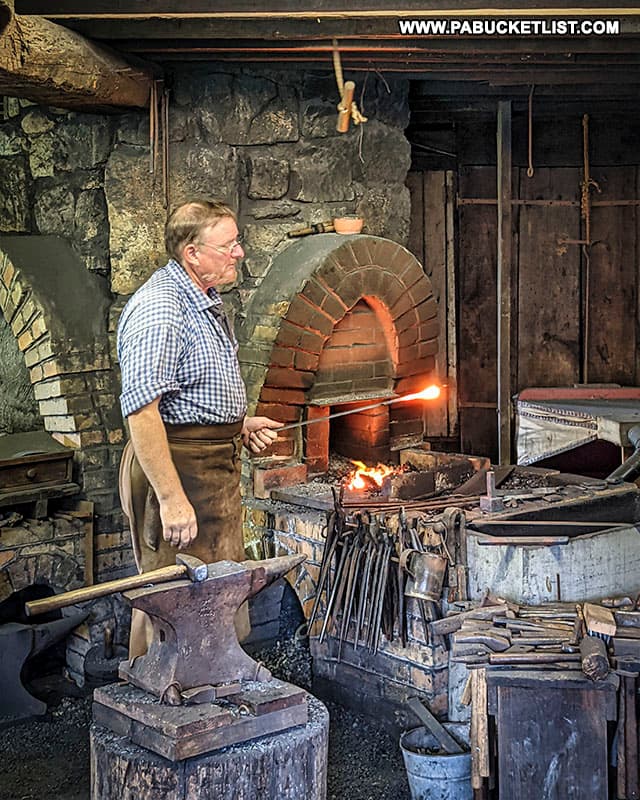
Shawnee State Park in Bedford County opened to the public in 1951, and has been a magnet for tourists ever since!
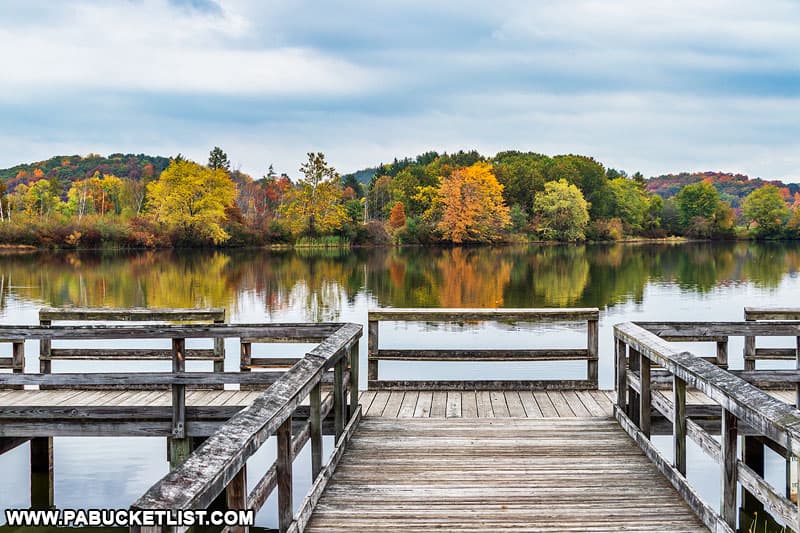
The 1806 Old Log Church is the oldest standing church in Bedford County, located along the Lincoln Highway just west of Bedford.
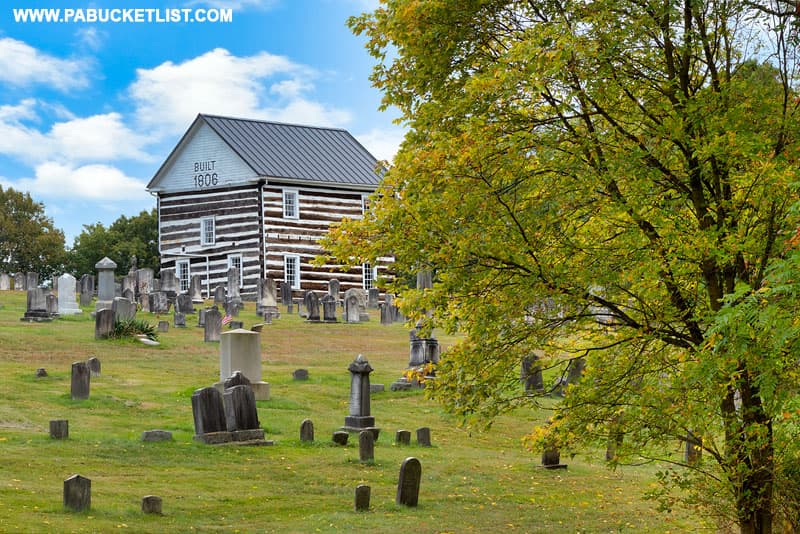
The Grand View Ship Hotel near Bedford was, in its prime, one of the most famous attractions along the Lincoln Highway, the first transcontinental automobile route linking the east and west coasts of the United States.
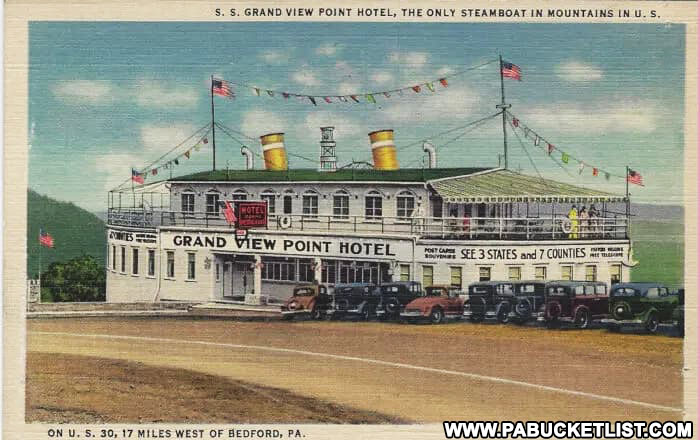
The Jean Bonnet Tavern in Bedford County not only serves up delicious food and beverages in a colonial American setting, but it is rumored to be the most haunted restaurant in Pennsylvania!
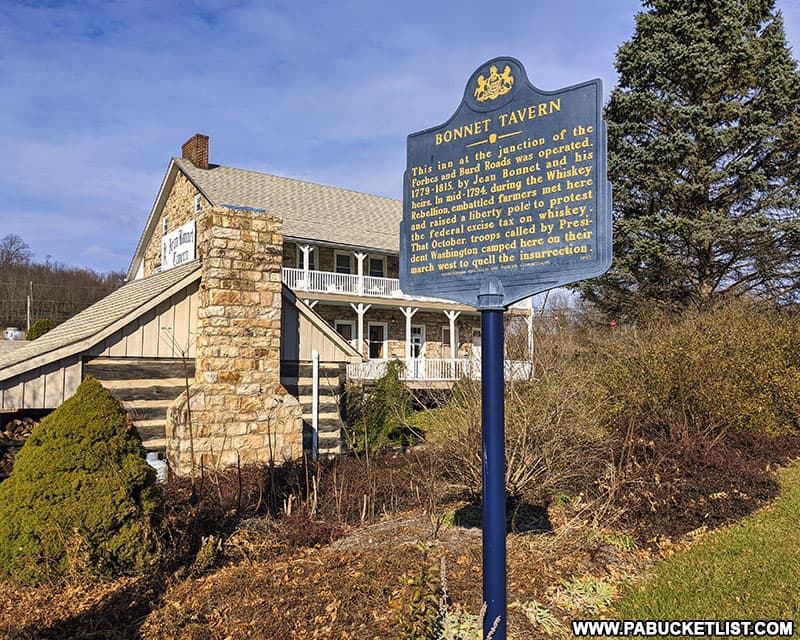
The Abandoned PA Turnpike is a 13 mile bike trail between Bedford and Fulton counties, a remnant of the first “superhighway” in the United States.
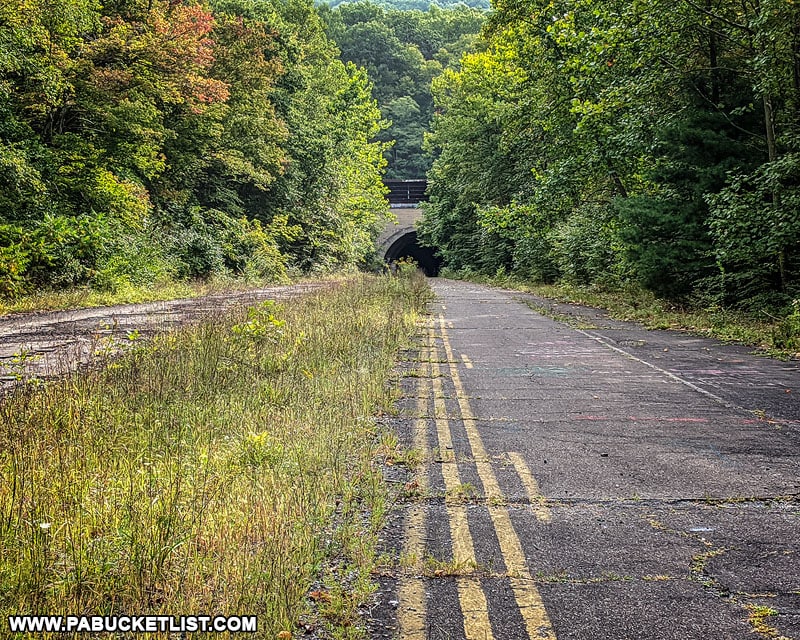
Now eerily silent, the bike path features a pair of long, unlit tunnels as well as miles of old asphalt road.
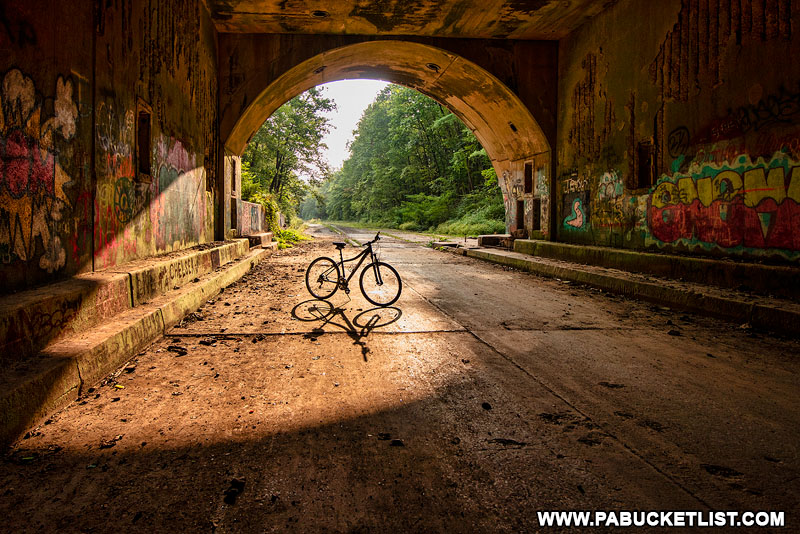
25 Must-See Destinations in Bedford County will show you even more great places to visit near the Fort Bedford Museum.
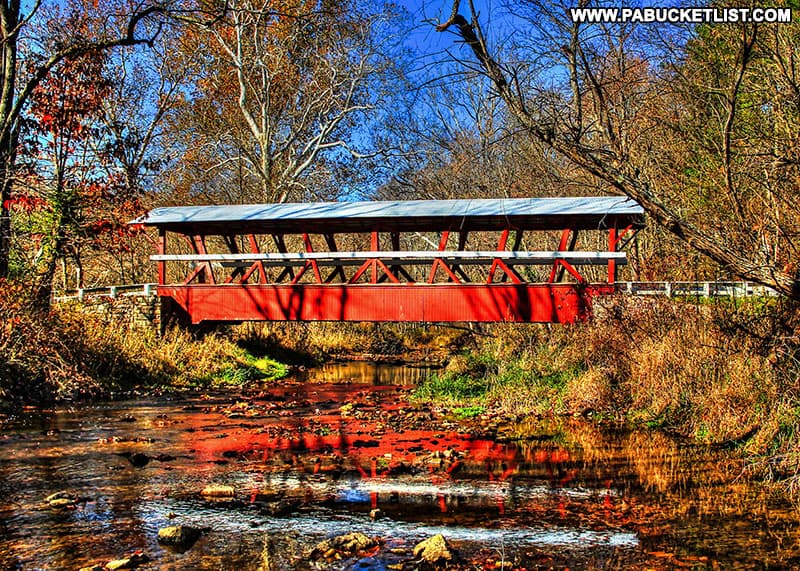
Did you enjoy this article?
If so, be sure to like and follow PA Bucket List on Facebook, Instagram, and/or Pinterest to stay up-to-date on my latest write-ups about the best things to see and do in Pennsylvania!
Click on any of the icons below to get connected to PA Bucket List on social media.


